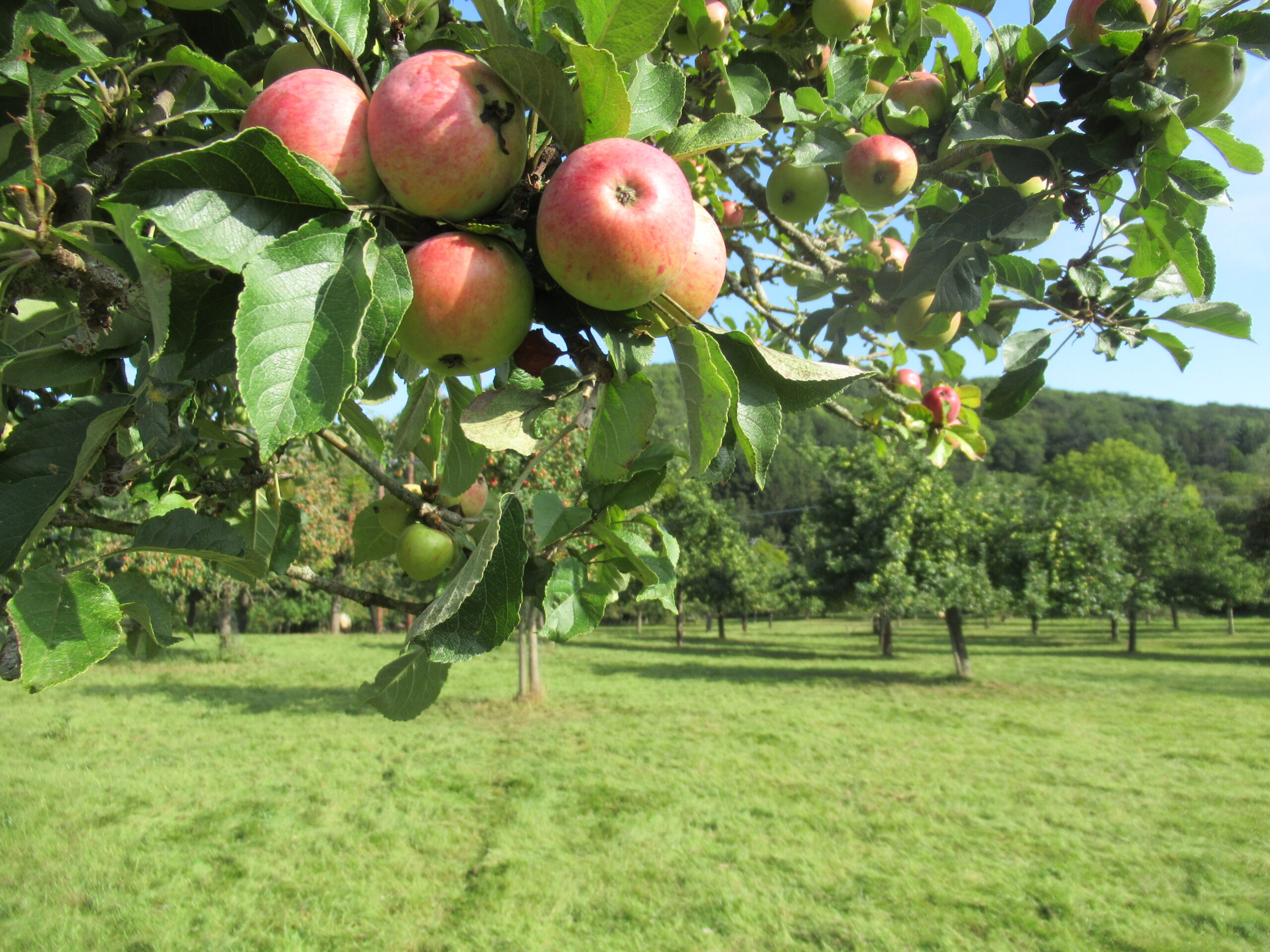Today our friends at Celtic Trails, who organised our trip, have taken pity on us and given us a half day off: there’s just between six and seven miles of easy walking ahead. For the first time we’re reduced to three walkers. We’re taken by taxi from Hereford to Fownhope, and we’ve persuaded the driver to take us up Woolhope Road to where we left the Walk yesterday, to avoid a trudge up from the village. As we get out, who should we see but the Couple from Chepstow. Not only have they organised the whole trip by themselves, they’ve walked up from Fownhope under their own steam. We look sheepish and let them march off into the distance ahead of us. They’re soon out of sight.
The path takes us gently upwards through broad fields with fine views behind us. It’s a serene start. Down to our right a man is training his dog and calling to it. A couple of mountain bikers rush towards us, and we make way. On telegraph wires swifts and martins are assembling for the flights to north Africa.
After the curiously named Bagpiper’s Tump we reach some orchards, the first of many in the next few days. A sheep poses self-consciously under one of the trees in front of us. The branches are laden with apples. Many look ripe and I pick one to try. But of course it’s not an eater. Almost all the apples in these parts are grown for cider-making, and most of the orchards are owned by Bulmers. Bulmers used to be a Hereford firm, but, like so much British industry, is now foreign-owned (by the Dutch Heineken group).
We’ve now arrived at Mordiford, a pretty village with a sinister name. It has a fine church, a pub, the Moon, a water wheel, and a handsome bridge across the river Lugg. C. and I last saw this river two years ago, when we had lunch on a rare bench on Offa’s Dyke near Presteigne. Then it was called Afon Llugwy and was already a good-sized stream. Since then it’s moved a long way south and east, and is just about to flow into the Wye.
Now we pass through some giant maize plants to gain the flood-bank of the river, and follow it as it winds back. On a hill on the opposite bank of the river is Sufton Court, a Palladian mansion built in 1788 by James Wyatt for James Hereford. The estate has been in the same family since the twelfth century.
The next village, Hampton Bishop, or at least the part we see, is very different: a collection of grand residences for retired aristocrats, gathered around St Andrew’s Church. The church has a Toytown look, with its pyramidal roof on a half-timbered tower. Inside there’s a slightly squashed round chancel arch, and a good organ, once played by Edward Elgar. The vicar is sitting, head bowed, in one of the pews. We assume he’s praying, but suddenly his phone rings (the ringtone is ‘church bells’) and we realise he’s been consulting his mobile. A road sign warns drivers to beware of elderly walkers in the road (are we included?). One of the houses is called Llwyncwtta, one of a series of house names (Llanstephan, Tynant, Llanfair) that remind us that a Welsh influence was once strong in these parts.
At a pub called the Bunch of Carrots we cross the road and climb on to another flood-bank, this time beside the Wye. We follow it for a short while and then cross fields to get closer to the river. By now we’re sharing the path with the Three Choirs Way. Then private housing closes down the riverside route, and we have to negotiate some suburban streets as we approach the centre of Hereford. (We pass, without recognising it, Edward Elgar‘s house, Plas Gwyn.) At last we leave the main road, down a lane that threatens to lead into a sewage works. We veer to the right and carry on till we reach the elegant white Victoria Bridge for pedestrians. We cross and continue along the south bank, past a public park, until finally the Cathedral comes into view.
Arriving in a city – the only one on the Walk – calls for coffee and cakes. We make the mistake of choosing a café with a river view, and find ourselves having to negotiate QR codes and downloaded apps to order – a nightmare for anyone over the age of sixty. Later in the afternoon we look round the Cathedral and, good librarians that we are, the Mappa Mundi and Chained Library. Years ago I used to come here for the annual meeting of the Library and Archives advisory group – a visit that I always looked forward to.
The owner of the B&B had recommended a particular pub to us, The Barrells, as a quintessentially Herefordian institution. So we seek it out. It describes itself as ‘a down-to-earth drinking establishment’, and reminds us of Mumbles drinking culture before Mumbles became 100% respectable. The yard at the back is full to bursting with locals – we’re the only outsiders, and I’m the only person drinking a half – throwing back prodigious amounts of beer, which flows down the ramp from the bar as copiously as the river Lugg. The din is deafening. It all makes for a very different experience from the sedate tea and cakes we enjoyed earlier in the Cathedral courtyard.








Leave a Reply